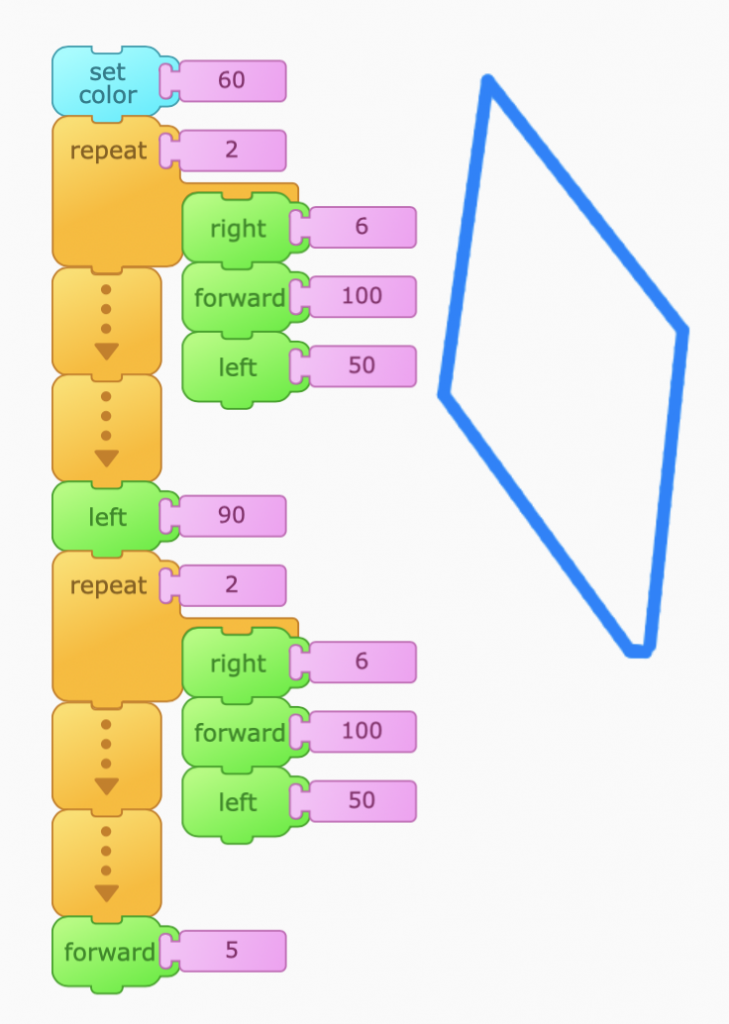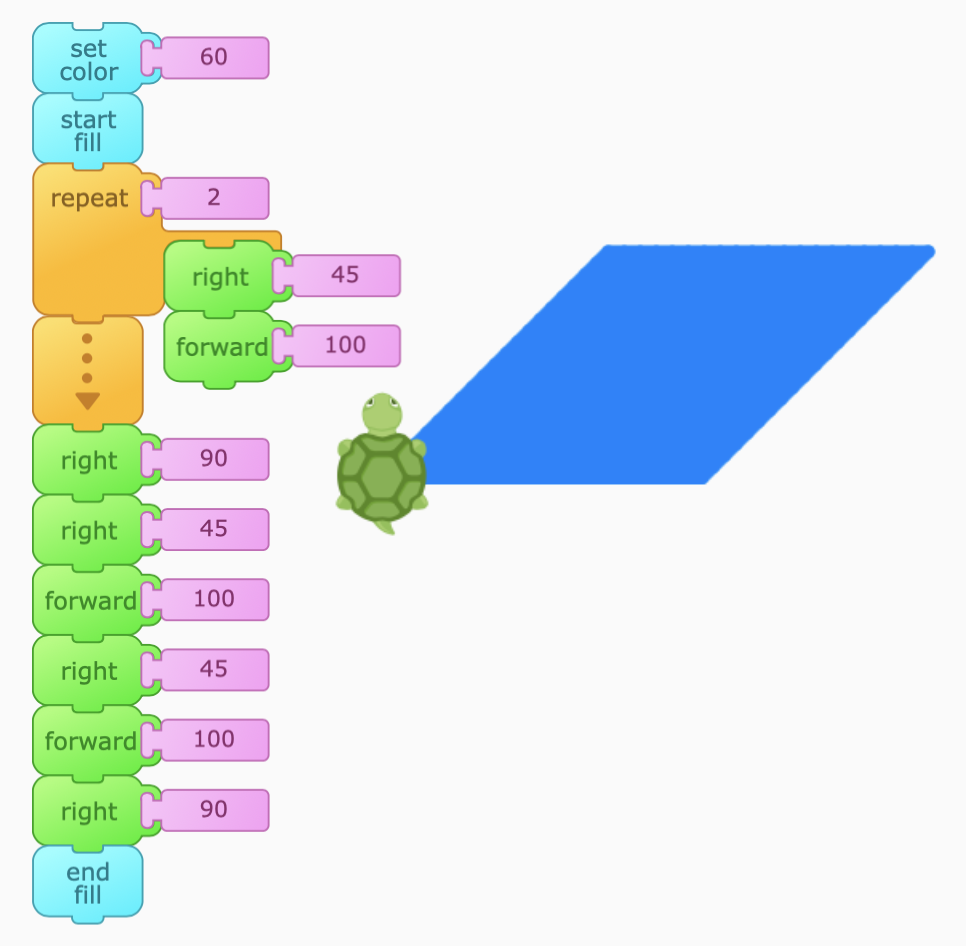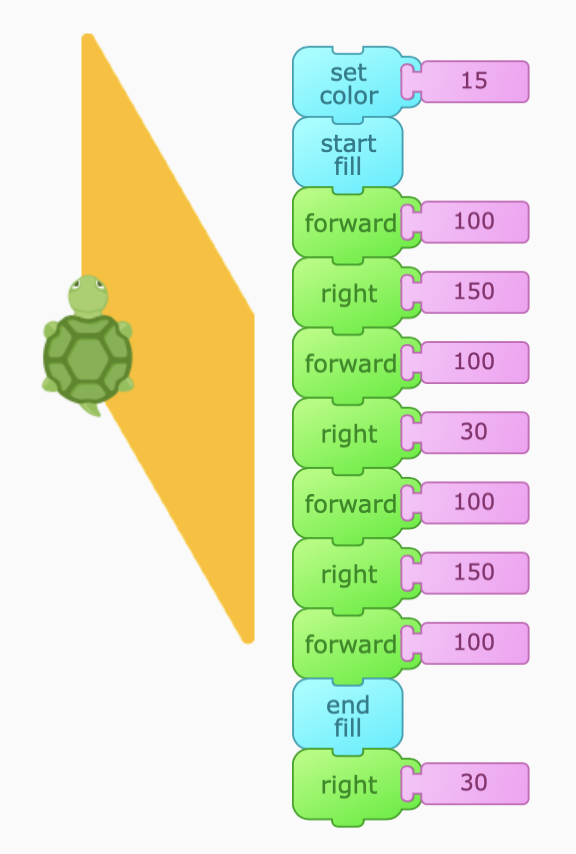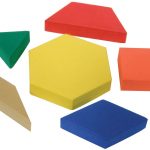I’m teaching a class of 4th graders in Alabama to program computers. Today (I think), was our fourth synchronous session. (I promise to write more about the context of this exciting project soon)
Last week, I introduced a challenge to teach the turtle in Turtle Art to draw each of the shapes in commonly used Pattern Blocks. Doing so isn’t about learning the name of the shapes, but formalizing geometric relationships and procedural description.
Once you figure out the sequence of instructions for drawing the shape, define a procedure by naming those instructions. That procedure then becomes a building block you can use to create more sophisticated procedures. Like LEGO bricks or wooden blocks, Logo procedures may be used to build complexity. Manipulating tactile pattern blocks on a tabletop may not lead to any powerful ideas and virtual manipulative are even sillier. Programming your own pattern blocks and using those procedures to construct designs requires a great deal of mathematical thinking, debugging, and creativity.
Abiding by my favorite “less us, more them,” and “what’s your hurry?” mantras, I want to give the kids ample time to explore, take detours, test hypotheses, create, wonder, and debug at their own pace. Elegance and efficiency, like anything else are a “consequence of experience.” (Piaget)
It is endlessly frustrating to interrupt the kids at all or try to move (some of ) them along just because of the artificial constraints imposed by school.
Between last week’s class and today, some kids figured out how to draw shapes, even the trickier ones, via successive approximations, repeated addition, or just “messing about.” That is all fine by me!


In the second example, the student programmer turns the turtle and then draws a side two times before finishing the figure with a sequence of instructions.
Another student created the instructions for drawing a trapezoid. Her program points in the direction of simplification.

Mindful of the clock since the hard working kids would soon dash off to their next activity, I talked the kids through the idea of looking for patterns – such as recognizing mirror images, sets of shapes, common lengths, turns we have used before – and thinking about what we already know before telling the turtle what to do. Programming elegance isn’t the goal as much as is my desire for students to begin to think more procedurally about problem solving. Turtle Art programming is not only fun and creative, but it concretizes formal mathematical ideas and provides an authentic context for their use.
You might enjoy this piece of scaffolding I created for the kids immediately after our session together. It better explains the project.
I digress
In the early 1990s, I organized a holiday computer camp for kids at Melbourne Australia’s Methodist Ladies’ College. MLC was the first school in the world with a laptop owned by every student (read more here or here). I insisted that there be other stuff for kids to do in between programming and robotics sessions. So, one of the options we created for kids was a dance class led by a choreographer with lots of professional performance experience. As I observed a masterful bit of teaching, I couldn’t help but notice some commotion at the back of the studio.
After the class, I mentioned to the instructor, “There seemed to be a bit of mutiny in the back row.” He nonchalantly replied, “There’s always a back row!”
Back to the plot
Minutes after today’s class, one of my colleagues on the ground in Alabama sent me this video of a kid working on his laptop diligently at the back of the classroom as I drone on via the Max Headroom screen up front. His work is 1000X better than my “lesson plan.” That’s part of the magic of Logo and it delights me.
Veteran educator Gary Stager, Ph.D. is the author of Twenty Things to Do with a Computer – Forward 50, co-author of Invent To Learn — Making, Tinkering, and Engineering in the Classroom, publisher at Constructing Modern Knowledge Press, and the founder of the Constructing Modern Knowledge summer institute. He led professional development in the world’s first 1:1 laptop schools thirty years ago and designed one of the oldest online graduate school programs. Gary is also the curator of The Seymour Papert archives at DailyPapert.com. Learn more about Gary here.


The piece of scaffolding link seems to be broken
me fix. Thanks